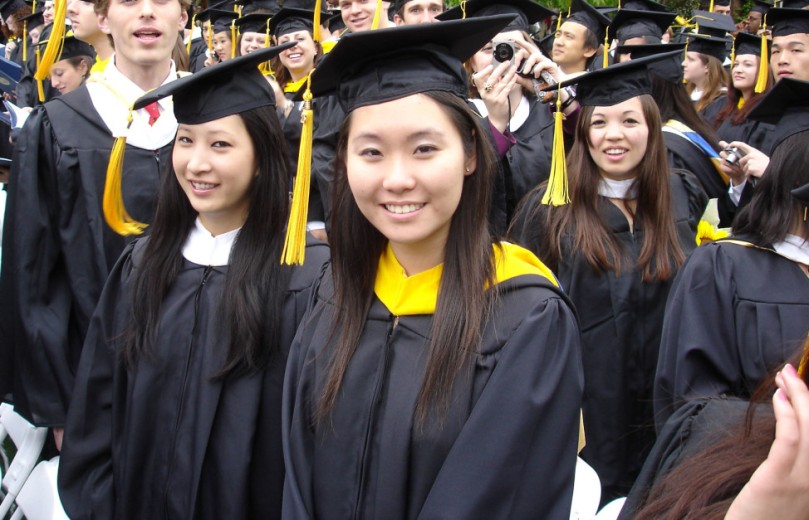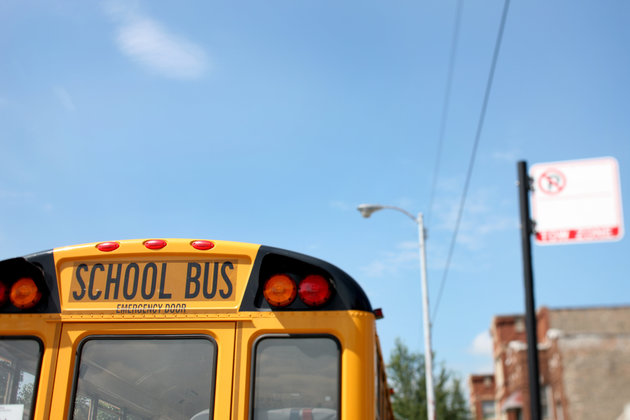Parental demands, fear of failure, competition and pride are fueling Asia’s academic ascension.
 FORT MYERS, Fla. — America’s education system is under attack and on the brink of failure.
FORT MYERS, Fla. — America’s education system is under attack and on the brink of failure.
Critics are hammering the U.S. as other nations ascend international rankings, net astounding test scores and produce coveted scientists and engineers to steer a 21st century economy.
“Considering the U.S. spends more money per student than any other country, but we’re showing up in the middle of the pack, is clearly a cause for concern,” said Rick Hess, director of education policy studies at the American Enterprise Institute in Washington, D.C.
But is the education system solely to blame for America’s slide in international rankings?
Seeking answers, The News-Press traveled this summer to Asia, where students — on paper — are running circles around American children, especially in math and science. Five countries and nearly 25,000 miles later, one revelation became clear: A math class there is the same as a math class here, only in a different language.
The difference between Asian and American education systems is cultural.
Throughout much of Asia, education is seen as the only path to success. Parental demands, fear of failure, competition and pride are fueling Asia’s academic ascension.
Simply put, children in Asia study with a purpose.
“There is a mentality of a first tier,” said Hwy-Chang Moon, professor and dean of Seoul National University’s graduate school of international studies in South Korea. “You have to be first-rate, otherwise you may not be able to survive.”
In dozens of interviews at nine Asian schools and universities, college officials, faculty, principals and parents repeated the same terms when describing the typical Asian student: committed, diligent, competitive, passionate, focused and ambitious.
Why does that matter to Americans?
Economic triumph is tied to educational triumph. And in a world where business has no geographical or political boundaries, everyone everywhere is the competition.
“Education is the driver of social mobility,” said John Spinks, senior adviser to the vice chancellor at the University of Hong Kong. “There is a belief that the higher education system will push the economy forward and build the talent pool.”
America set the pace internationally for generations. Like a race horse that springs out of the gate, though, the U.S. is faltering down the stretch.
“America is still the best, but the gap between America and Korea and Singapore and Japan is getting smaller,” Moon said. “It’s time for America to watch out and see what’s happening.”
Prioritizing education
At 10, Justin Yeung knows education is his priority for the next 15 years.
“Learning is very important, and it can change my whole life,” said Justin, a fifth-grader at Kau Yan School in Hong Kong. “If I study hard and have good marks, I can go to some good schools and I can have good work to do.”
The mindset across much of Asia is not whether a student will attend college; it’s where, and for how long, said Tan Eng Chye, deputy president and provost at National University of Singapore.
“Education is an established path toward success,” Chye said.
With a 77 percent high school graduation rate, the U.S. is ranked 22nd of 28 nations with measurable data by the Organization for Economic Cooperation and Development. Among 18 countries analyzed for post-secondary education, the U.S. tied for last, with 53 percent of adults completing some type of degree or certificate program.
By sheer volume, Asia has the capacity to produce more mathematicians, scientists, engineers and every other profession simply because 60 percent of the world’s population lives there. Slightly more than 4 percent of the world’s population lives in the U.S.
President Barack Obama has said America must “out-educate” other nations to continue thriving economically. That competitiveness is ingrained in the minds of Asian youth.
“People in Asia have a thinking about I can’t lose, I have to fight with other people or something, I have to get a very good grade,” said Hung Kuo, a 14-year-old eighth-grader at the Affiliated Junior High School in Taipei, Taiwan. “The parents think that, so they push their children to study very hard.”
Government subsidies make a college education affordable at many Asian universities. The University of Tokyo, widely considered Asia’s top university, charges the equivalent of $5,344, a fraction of Harvard University’s $38,891 annual tuition rate.
Local students at the University of Hong Kong pay $5,427 per year. Spinks, HKU’s senior adviser, said few parents balk at the tuition cost because good jobs are awaiting graduates. During the past seven years, an average of nine HKU graduates per year are unable to land employment.
“A university degree is seen by most families as an investment in their son or daughter’s future,” Spinks said. “For Asian families, there is a return on investment.”
Generations of Asians were raised with two career options: factories or farms. New hubs for finance, technology and energy, however, will drive Asia’s economic future. David Bickford, an assistant professor of biology at National University of Singapore, said Asians don’t take education for granted.
“In rural villages, kids see education as the only way out,” Bickford said.
Team victory
Parental involvement is a sticking point in American schools. Principals and teachers implore parents to get involved, whether it’s volunteering in the classroom, fundraising or simply helping children with homework.
Ruthie Lohmeyer, principal of Lee County’s Alternative Learning Center-Central and Lee Adolescent Mothers Program, said parents have a variety of excuses why they aren’t active: They are busy with work; have personal issues; don’t know how to get involved; or have limited education. Parents, Lohmeyer said, are partners who must do their share to ensure students graduate.
“It’s a struggle, but we’re all there for the same reason,” Lohmeyer said. “You can’t give up trying.”
Hiroshi Inouye, principal of Koyodai Elementary in the Tokyo suburb of Inagi, Japan, said parental involvement also is key there. Instead of holding school activities during the workweek, Koyodai scheduled its spring field day on a Saturday, noting nearly 100 percent parent participation, including dads.
Inouye said Japanese teachers expect parents to take over at home so learning doesn’t stop once the school bell rings.
Rather than seeing nightly assistance as a burden, 17-year-old Ye Kwon Huh said that’s the time parents demonstrate the importance of education to their children. It’s also where they set the bar.
“There’s always kind of a feel that you should live up to these expectations,” said Huh, a senior at Bugil Academy in Cheonan, South Korea, a two-hour train ride south of Seoul.
Those lofty expectations, however, can cross the line. Yin Li, an English instructor at Yantai University on China’s east-central coast, described Chinese parents as pushy, admitting some “encourage with force.” Their ultimate goal, however, is the next generation will have a brighter future.
“If you achieve something in China, it is not your own victory, but it’s also your family’s victory and your country’s victory,” Li said. “We study for our family and for our culture.”
Criticisms of Asia
Asia’s education system looks great on paper. On the Trends in International Mathematics and Science Study, Singapore, South Korea, Hong Kong, Taiwan and Japan composed the top five in math among fourth- and eighth-graders. On the Program for International Student Assessment, Finland was the only non-Asian country to crack the top five in any of the subjects tested: science, reading and math.
High test scores, however, don’t mean education is perfect across Asia.
The Philippines, Thailand, Vietnam and others operate subpar primary and secondary schools, and their universities rarely garner international attention.
Chan Woo Lee, a 23-year-old philosophy major at Seoul National University in South Korea, is concerned about cram schools, which are private or group tutoring sessions that can create an achievement gap between rich and poor families. Registration fees can be staggering, as much as $200 per hour.
“It creates an imbalance because rich people can afford cram schools, so their scores are better,” said Haruka Nuga, 21, a journalism major at the University of Hong Kong.
Cram schools became so prevalent across Asia that Seoul’s office of education hired administrators to patrol neighborhoods, citing cram schools where students were caught studying past 10 p.m.
Excessive homework, nightly reading requirements and studying can overwhelm students, according to Chao Yang Lo, an electrical engineering major at National Taiwan University. He said some professors keep piling on the work under the notion it will only take “several hours.”
“We don’t have so many ‘several hours’ in the day,” said Lo, 22.
Chye, in Singapore, said heavy workloads at an early age can have negative consequences.
“They don’t have the joy for learning,” Chye said. “After a while, they may burn out.”
http://www.usatoday.com/story/news/nation/2013/08/04/asian-students-carry-high-expectations-for-success/2615483/
Written by: Dave Breitenstein
August 4, 2014




 FORT MYERS, Fla. — America’s education system is under attack and on the brink of failure.
FORT MYERS, Fla. — America’s education system is under attack and on the brink of failure. In a recent New Yorker cartoon, a dog is shown lounging by a pool and saying to a pup: “Youtube’s one thing, but cats will never make it on the big screen.” A funny commentary, surely, but in America that statement could just as easily be applied to ethnic minorities, especially Asian Americans.
In a recent New Yorker cartoon, a dog is shown lounging by a pool and saying to a pup: “Youtube’s one thing, but cats will never make it on the big screen.” A funny commentary, surely, but in America that statement could just as easily be applied to ethnic minorities, especially Asian Americans. Race is a large determinant in American Politics however, Asians and Asian Americans seem to be left out. In the current electoral race (2016), we hear analyst speak of which candidates are getting the ‘White vote’, the ‘Black vote’, or the ‘Hispanic vote’ but we never hear which candidate gets the ‘Asian vote’. This is not a recent trend, it has been occurring since the day the constitution was written. Many have attributed this to the small number of Asians compared to other ethnicities and though it may have been true, the numbers have exponentially risen and in 2016, we should have heard some of the politicians speak about it. Bernie Sanders, who has been courting the votes of people of color yet he has not mentioned any issues Asians face that other races may face too.
Race is a large determinant in American Politics however, Asians and Asian Americans seem to be left out. In the current electoral race (2016), we hear analyst speak of which candidates are getting the ‘White vote’, the ‘Black vote’, or the ‘Hispanic vote’ but we never hear which candidate gets the ‘Asian vote’. This is not a recent trend, it has been occurring since the day the constitution was written. Many have attributed this to the small number of Asians compared to other ethnicities and though it may have been true, the numbers have exponentially risen and in 2016, we should have heard some of the politicians speak about it. Bernie Sanders, who has been courting the votes of people of color yet he has not mentioned any issues Asians face that other races may face too. When Democratic presidential candidate Bernie Sanders talks about racial justice, he has a habit of referring to three specific groups of people: white, African American, and Hispanic. I think Sanders is finally finding his footing in movements like #BlackLivesMatter, and actions like those at Netroots Nation and at his Seattle rally are pushing him in the right direction. But while I’m glad to see that major Democrats are finally starting to talk explicitly about racism, there is something I still don’t completely understand — why are
When Democratic presidential candidate Bernie Sanders talks about racial justice, he has a habit of referring to three specific groups of people: white, African American, and Hispanic. I think Sanders is finally finding his footing in movements like #BlackLivesMatter, and actions like those at Netroots Nation and at his Seattle rally are pushing him in the right direction. But while I’m glad to see that major Democrats are finally starting to talk explicitly about racism, there is something I still don’t completely understand — why are